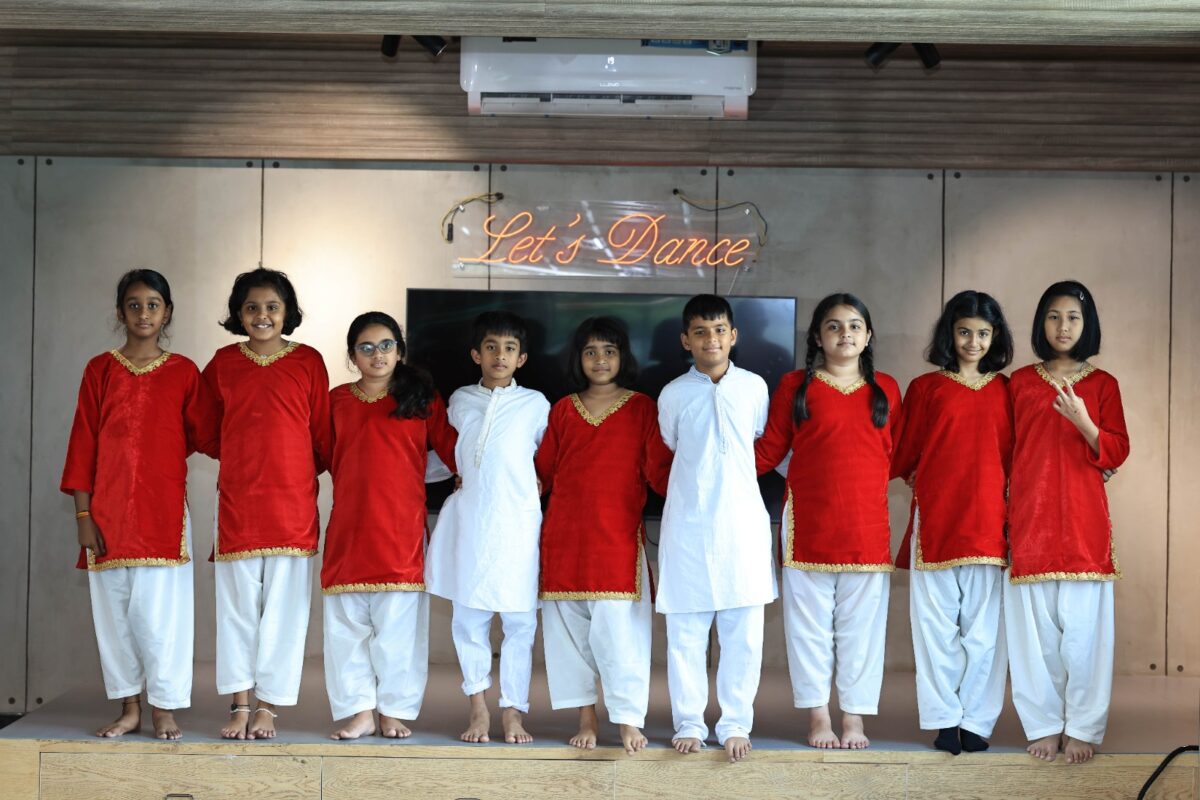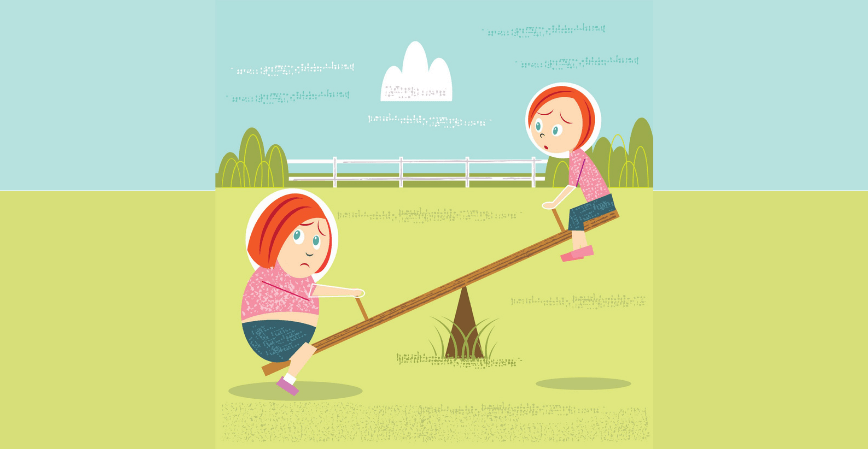A teacher’s day starts with the alarm chiming early in the morning. She shuts it down so that it does not jostle other family members fast asleep beneath warm comforters. She has a lot to accomplish before getting ready for school – it begins with collecting the newspaper and milk from the doorstep, making breakfast and lunch for the entire family and scrubbing the kitchen platform clean before gulping down some coffee and cold breakfast.
In this super marathon, she even manages to pull out an attractive dress to wear for the day, streaks her eyes with the remaining stub of the eyeliner – it needs to be replaced. Fixes stray locks of hair as the elevator descends and sometimes also takes time to smear the lipstick she carries in her ‘Super Purse’. Super, because it holds anything and everything one can imagine from pens, lipsticks to staplers! As she reaches school, there are duties to discharge and classes to take.
This is my usual morning routine too!
As I entered the staff room, I checked the timetable and made note of my classes. Then I casually walked towards the staff room notice board.
Surreptitiously, I checked the notices making sure there was no one around me.There, it was pinned right on top. This was what I had been dreading. ‘My class’ had earned the designation of being the ‘Dirtiest Class’ of the week.
Again.
This was the seventh consecutive week it had been declared as the dirtiest class in school.
I walked back to my place with a heavy heart!
Everything had failed. Talking, counseling, mentoring and as the last resort, imposing penalty for littering the class with pencil shaving. Everyday, there were masses and masses of them. In spite of many warnings, someone was deliberately and relentlessly sharpening pencils and leaving all the shavings – fine wooden ones with coloured edges of red, blue, green and orange under the desks.
It was innocent mischief I knew but I didn’t know how to identify the culprit.
He or she was obviously very smart. And class unity was so strong that nobody revealed to me who was responsible for our class being nominated as the dirtiest class in school, week after week.
Every time I asked, ‘Who is doing it? Why don’t you dispose the pencil shaving in the dustbin of the classroom?’ The answer was, ‘Not we. It’s someone from the other class!’
This happened when I had to go to take lessons in other classes.
Fortunately, that day I didn’t have a class in the first hour and thought of some way… I could find the mischief-maker. I racked by brain….
Was there no way I could find my mischief-maker? Peacefully?
Is it possible to outsmart my little ones? I asked myself, almost pulling my hair.
And then I decided whatever had to be done, it was that day.
But, I didn’t know how I would do it!
I had a class in the second hour and I knew my naughty pencil-shaver would get into action after my class was over.
That day, I didn’t as usual tell my students to keep the class clean.
I didn’t say a word. I didn’t make any comment.
During the lunch hour, I peeped into the class when it was empty.
The shavings were back. They were all there, scattered in abundance under most of the desks.
I collected all the shavings, wrapped them in a piece of newspaper and kept it in my bag.Then I left, keeping my fingers crossed.
After lunch I went to my class, with a sheaf of white paper and announced that they weren’t going to study Science. Instead, they were going to draw and colour something very interesting for a competition.
The class was ecstatic… so thrilled they were that they did not even guess that something was wrong.I was so excited that I had trouble controlling my smile.
As the class started drawing, I pulled out the crushed paper from my purse. I placed it on the teacher’s desk and spread it out so that I could see the pencil shavings clearly.
And then I walked up and down the aisle, carefully scrutinizing every student colouring the picture they had made very enthusiastically.
The first one was colouring with red. It needed to be sharpened. It wasn’t him.
The third one was outlining the leaves with a darker shade of green. It, too, needed to be sharpened. It wasn’t her.
I walked past four more. And then I found my little culprit…!
He was a little fellow with the face of an angel!
His red pencil was sharpened very well.
Then I picked up his blue, green and orange pencils. They were all freshly sharpened and quite small in size.
As I stood next to him without a word, he looked at me innocently.
Giving me a huge smile, he said. ‘Hello Miss! Aren’t my mountains the highest in the whole world?’ he asked running a finger over one mountain peak proudly.
‘Yes, your mountains are the highest. But don’t you think the lines could be neater if your pencil was sharpened? The pencil point needs to be sharper. Don’t you think so?’ I asked looking at him expressionlessly.
‘Well, yes. I think you are right,’ he said looking at his pencil.
I noticed everyone had stopped drawing and were looking at us curiously.
‘And please use the bin when you want to sharpen your pencils and not the classroom floor.’ I said gently as I walked further down the aisle.
‘How did you find that out,’ he asked in bewilderment.
I controlled the smile again. He hadn’t realized that he had revealed the secret.
I turned to look at him with a secret smile.
‘Because once upon a time I was a student too!’ I said smiling wider. ‘Use the bin the next time and let’s try to win the Best Class award next month,’ I urged.
‘Sure Miss. Why not?’ he replied smiling back.
A look passed between us. There was respect and admiration in those eyes.
I celebrated that evening because I had been able to solve the mystery of the pencil shavings.
When everything fails in classrooms, teachers have to learn to think like students! And also listen to inanimate objects in the classroom.
Everything talks in a classroom from a blackboard to a chalk piece. We just have to learn to listen to them – like the way the pencil shavings told me who my little culprit was……
And the result is sheer magic!
Special Thanks to Kavita Bhupta Ghosh , teacher of DPS, Bangalore South, for sharing her thoughts. This Guest Post has been written by Kavita Ghosh.
There are 4 factors which parents should keep in mind before choosing the apt school for their child.
1. What Your Child Learns: These are aspects of your child that affect what subjects and at what level of difficulty your child should be taught at school. These include your child’s Basic Learning Capability, other capabilities, and interests.
2. How Your Child Learns: These are aspects of your child that affect how a school should teach and interact with your child both in and outside of the classroom. These include your child’s learning styles, motivation, physical and mental health challenges, behavior challenges, learning disabilities and disorders, and self-understanding.
3. Social Issues: This includes the need for social contact with particular friends from the child’s perspective.
4. Practical Matters: This includes essential extracurricular activities that may be compelling choice factors for some children.
Not every factor characteristic is important for matching every child to the right school. You’ll need to decide which ones are really important for your child. Most children will have only a small number of characteristics that are top priorities for selecting a school. Identify these, and you can focus on finding a truly Great Fit school for your child’s top needs.
Signs that a school setting fits your child include these:
> Your child is eager to go to school.
> Your child acts energized and happy at the end of the school day.
> The pace of learning in core subjects is, overall, about right for your child: challenging but achievable.
> You see tremendous progress in your child’s overall development – academic, physical, social and emotional – throughout each school year.
> Your child feels that her abilities and interests are appreciated at school.
> Your child is achieving and performing academically at the level of which he is capable.
> Your child has friends and acquaintances who like and accept him at school.
> School work and friends are important, but not all-consuming, parts of your child’s life.
If a school setting is a poor fit for your child, you might see some of these signs:
> Well into the school year, your child is hesitant, or even adamantly opposed to going to school.
> Your child is not just tired, but worn down and unhappy at the end of most school days.
> Your child has made little progress in the past year, either academically, socially, emotionally or physically.
> Your child often says “school is boring.”
> Your child is not performing as well academically as you think he can.
> Your child expresses little interest in what she’s learning at school.
>Your child often says that teachers or other kids do not understand her or do not like her.
> Your child doesn’t seem to have any close friends or friendly acquaintances at school.
> Your child shows symptoms of stress only when school’s in session.
Now, Why We Think That ‘School Of India’ Will Be A Great Fit For Your Child?
Because your child deserves the best. A school which is Indian at heart and International by vision & approach.
‘School of India’ functions under the support of the KK Educational and Charitable Trust, spearheaded by new-age thinking educationists who believe in celebrating India, celebrating your child, instilling a sense of pride about the country and most importantly building a foundation so that your child develops into a model human being. At ‘School of India’, we focus on each child individually and a conscious effort is made towards understanding each child’s talents and creating constructive learning environments. The objective at SOI is to facilitate all students to reach their highest potential, as we believe it is the most valuable investment we can make towards securing the future of our country.
The School of India believes in raising its children to be tolerant, responsible citizens, who celebrate the diversity of cultures in India and aim to better our country. We want to provide our students with a quality education that competes with international benchmarks, with an Indian focus. Our integrated approach has facilitated the evolution of young children into ‘Active citizens’. Students are encouraged to believe that they are the catalysts of change.
Our focus is on encouraging students to trust their own opinion while fostering confidence so that they realize and live to their full potential.
Our Mission
To create an autonomous education board that emerges as the ‘thought leader’ in the education space. To build a robust teachers training system and make them active partners in shaping the future of the school. To impart a superior quality education that is holistic and innovative. To design spaces that are sensitive to the needs of the child and the environment.
Teaching Philosophy
While learning about what is happening around the world, we many a times forget to learn things about our own country. At ‘SCHOOL OF INDIA’ our teachings are inspired by the rich legacy of India. An India that has been instrumental in shaping the modern world as we see it today. We celebrate everything Indian and instill a sense of pride about the country in your child.
This is what one of our students expressed:
“I am excited to come to school everyday and look forward to all the fun activities and celebrations. Our teachers are the role-models who demonstrate being respectful, responsible and sensitive. I feel confident in academics and can think independently, which I attribute to the teachers of School of India who are very knowledgeable and helpful. The infrastructure, smart class, sports amenities, labs and the ambiance of my school makes me feel comfortable and proud. I get a chance to participate enthusiastically in all the activities happening in school.”
– Tejas SOI Student-Class VI
This is what one of the parents said:
“I am extremely happy about my child’s school – School of India and the way the teaching and non-teaching staff interact with us. I see that they are highly committed and do what they say. SOI stands out in children’s discipline which is imbibed at school. I am impressed with the array of activities lined up for children. The infrastructure includes all the modern equipment’s and technological aids that help to retain the interests of children and engage them in an enjoyable learning model. We are Indians and we want our children to be proud Indians too, who will spread the message of Being Indian in the world. The curriculum at SOI is extensive that promotes pride in our rich cultural heritage.”
– Mr Biju Benjamin SOI Parent – Aniya (class III)
Thanks for reading this blog, and we hope that you make the right decision for your child’s happiness.
“Encourage & support your kids because children are apt to live up to what you believe of them.” ~ Lady Bird Johnson











